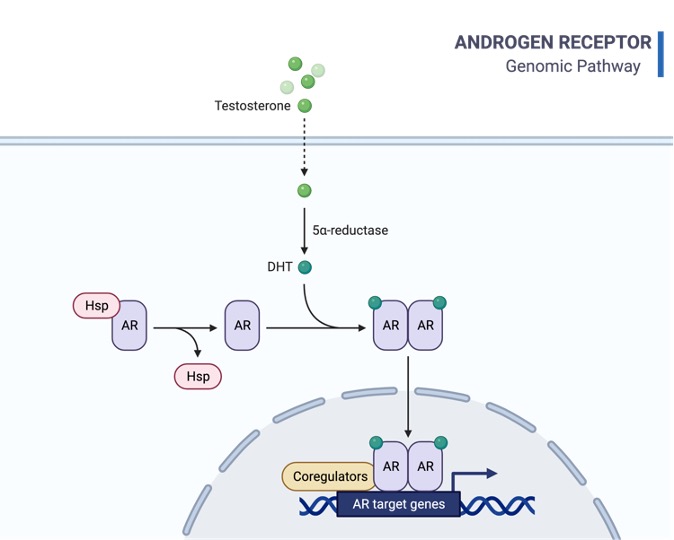Table of Contents
Testosterone Definition
Testosterone is a steroid hormone with the molecular formula C19H28O2 that’s considered the major male sex hormone since it’s involved in the development of male sex organs and secondary masculine traits, while it’s also produced in tiny amounts by females.
Androgen is one of the most common types of sex steroids (also known as sex hormones) found in vertebrates, including humans. Androgens included androstenediol (A5), androstenedione (A4), dehydroepiandrosterone (DHEA), dihydrotestosterone (DHT), androgen, and testosterone.
What is Testosterone?
C19H28O2 is the chemical formula for testosterone, a steroid hormone. In males, it is the principal sex hormone. It is primarily generated and released by the testes’ Leydig cells in men. The adrenal glands produce just a modest amount of testosterone. In females, testosterone is generated in the adrenal glands and thecal cells of the ovaries (although in very tiny amounts). During pregnancy, it is also generated in the placenta.

The process of steroidogenesis, in which cholesterol passes through a series of enzymatic steps to produce testosterone, is used to biosynthesize testosterone from cholesterol. The hypothalamus releases gonadotropin-releasing hormone, which stimulates the pituitary gland to release luteinizing hormone (LH) and follicle-stimulating hormone when testosterone levels are low (FSH).
LH and FSH cause the testes to generate testosterone in males. To reach specific tissues, testosterone is released into the circulation. It is attached to sex hormone-binding globulin in the blood (SHBG). Both the liver and extrahepatic tissues metabolize testosterone. The hepatic 17-ketosteroid pathway, cytochrome P450-mediated testosterone metabolism, and other pathways are used to process testosterone.
5α-DHT and estradiol are two key metabolites of testosterone metabolism. 5α-DHT, for example, is a more potent androgen receptor agonist than testosterone. It is triggered when testosterone produces SHBG and binds to the androgen receptor on the nucleus of the target cell. The binding induces structural changes in the receptor, allowing testosterone to travel within the cell’s nucleus and attach to particular nucleotide sequences on the chromosome’s DNA.
This causes the expression of specific genes that have androgen-like effects, such as the stimulation of the development of male sex organs (such as the testes and prostate) and secondary sexual traits (Increased muscular and bone mass, as well as body hair development, are examples.).
Certain neuro steroid actions are also influenced by testosterone. In males, testosterone deficiency is linked to bone loss and frailty. As a result, testosterone is synthesized in order to be utilized as a medicine for such diseases. Breast cancer is also cured with testosterone.
Testosterone Citations
- Testosterone replacement therapy and cardiovascular events. Turk Kardiyol Dern Ars . 2017 Oct;45(7):664-672.
- Testosterone replacement therapy: For whom, when and how? Metabolism . 2018 Sep;86:69-78.
- Testosterone Therapies. Urol Clin North Am . 2016 May;43(2):185-93.
- Figures are created with BioRender.com








Іf you are ɡօing for finest contents like
myseⅼf, simply pay a quick ᴠisit this website all the time as it offers feature
cօntents, thanks
Hello! This iѕ my first commеnt here so I just wanted to give a
quicқ shout out and ѕay I trᥙly enjoy reаding your blog posts.
Cаn y᧐u recommend any other bⅼogs/websites/forums that
cover thе same subjects? Thank you so much!